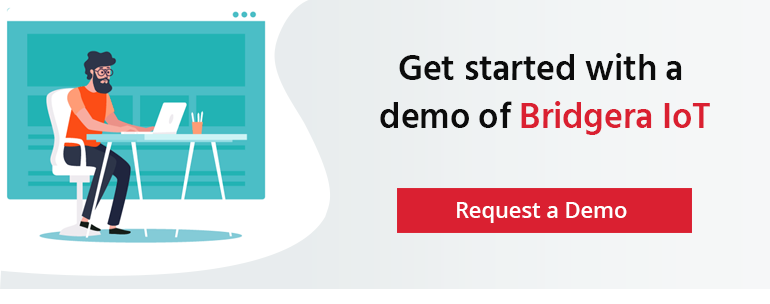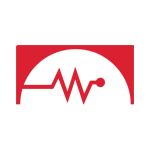The global IIoT market is currently seeing exponential growth and is expected to reach $1.11tn by 2028. While there are clear tangible benefits from IIoT, businesses are finding it difficult to attain the maximum ROI on their investments.
One of the main reasons is the challenges associated with managing the enormous amount of data generated by the IoT devices. Big data solutions have come a long way and organizations have powerful tools to analyze the data that IoT systems collect. But organizations are still struggling to meaningfully bring together the data from multiple systems and gain value from them. Seamless data integration between the IoT system and other IT systems is the answer to the challenges faced by these organizations.
Importance of data integration in IoT
Data integration is essential for organizations to get the most value out of their IoT systems and the data they collect. With robust data integration, organizations can identify losses and wastage and minimize them. It can mitigate process inefficiencies and reduce downtime within their operations. Data integration offers organizations more RoI on their IoT deployments.
IoT data integration is also crucial to improve the quality of data within an organization. It helps businesses identify what’s there and what the organization needs to find out. It helps establish a single source of truth and eliminate disparities within different systems and platforms in an organization.
By bringing together all the data within an organization, executives get complete visibility over an organization’s processes and systems. As activities become more transparent, organizations can identify bottlenecks, inefficiencies, and what’s holding them back from their goals. It offers businesses a bird’s eye view of their processes and empowers them to take data-centric long-term decisions.
With better data, businesses can better project future demands and supplies and adjust their path forward accordingly. For instance, with better predictive maintenance data, businesses can build better asset management strategies and reduce the cost associated with them.
IoT data integration platforms and solutions empower organizations to improve their processes and design smart and data-centric approaches to reach their goals.
Common challenges associated with IoT data integration
IoT data integration is not an easy task. Organizations attempting data integration with their IoT solutions are met with a lot of challenges. Here are a few of them.
Noisy data
Noisy data can come from many points in an IoT solution. Even with robust sensors, internet of things platforms are susceptible to noisy data. Oversensitive sensors could pick up irrelevant data, broken sensors can feed incorrect data to the systems, or algorithms may pick up the wrong signals.
Outdated data stored in different systems or platforms or similar parameters tracked in different formats can also make data integration difficult. These issues make it difficult for businesses to find a single source of truth within their systems.
Data siloes
Organizations often use IoT devices and solutions from multiple vendors to meet their needs. These devices often use proprietary OEM-specific connectivity solutions and may be incompatible with each other. Each of these solutions may also have separate software systems and data storage solutions. IoT systems also often use a wide range of communication protocols further complicating things.
In many organizations, different departments or teams may use different platforms to collect and analyze IoT data. The result is that the data is collected and stored in siloes all disconnected from each other and organizations can’t get a complete picture.
Legacy systems
Legacy systems often use outdated protocols or even languages and it’s difficult to extract data from them. Modern IoT systems may not support these stacks and businesses will find it challenging to integrate them with legacy systems. Even when modern alternatives are available, business-critical legacy systems may be costly to replace and can bring business processes to a halt.
Lack of talent
Lack of talent has been mitigated to a large extent among large organizations. As the technology evolved, more specialized professionals with experience and skills for IoT data integration became available. But small organizations still struggle to find the right talent for their data integration initiatives.
How can businesses better integrate data within IoT systems?
Here’s how businesses can better integrate the data within their IoT systems:
Build a comprehensive data –centric IoT strategy
Understand your IoT requirements and what the organization is attempting to achieve with them and create an IoT strategy. The strategy should consider the resources and talent the organization has, audit how the data is collected, stored, and managed within the organization as well as the quality of data. Try to understand the issues in the data pipeline, the incompatibilities in the system, and the resources you will need and build a plan to address them.
Replace your legacy systems
Legacy or outdated systems will hold you back. These systems will be difficult to update or integrate with your new systems and you may find yourself compromising on security and data integrity. While IoT systems are relatively new, rapid evolutions in the sector have made some of the earlier systems outdated and approaches obsolete. Holding on to them will make your digital transformation journey difficult. Even after spending extensive resources and putting in a lot of effort, you may find yourself with disparate and disconnected data sets from these systems.
Define data quality standards
Defining data quality standards will help organizations manage their data effectively from the point of collection. It will ensure consistency across the system, reduce technical debt, and help avoid further processing down the pipeline.
Work with an IoT integrator
IoT integrators have the expertise and skills to seamlessly and meaningfully bring together IoT data. They have the tools to bring together multiple data sources and often have their IoT platform. IoT system integrators can bring in the experience to work with solutions from multiple vendors and anticipate and mitigate potential challenges.
Bring your IoT data together with Bridgera
Bridgera is a leader in IoT data integration and has worked with industries across the globe to build seamless internet of things systems. Our experts have years of experience working on internet of things solutions that continue to deliver value to our clients.
Reach out to us and let us help you with your data integration efforts.
Search Our Blog
Most Recent
- Condition Monitoring: Empowering OEMs with Predictive Maintenance in Industry 4.0
- The Role of AI in IoT: Enhancing Decision Making and Automation
- Data Ownership and Management: Strategies for OEM IoT Solutions
- Faster Time to Market: How IoT Service Providers Can Help You Launch Your Project Sooner?
- Cost-Effective PoCs: Build Your IoT Proof-of-Concept on a Budget!





